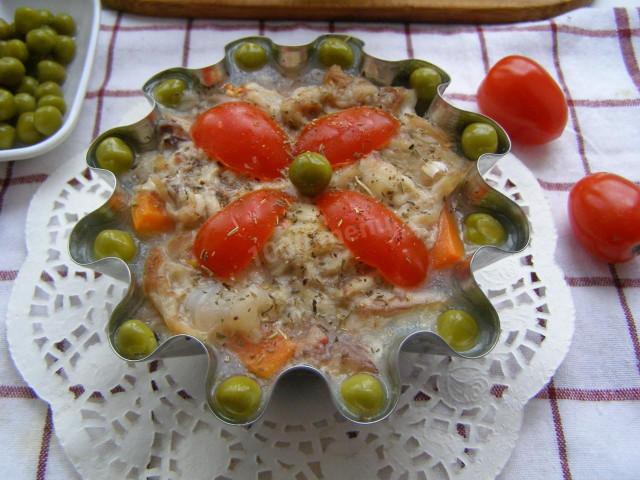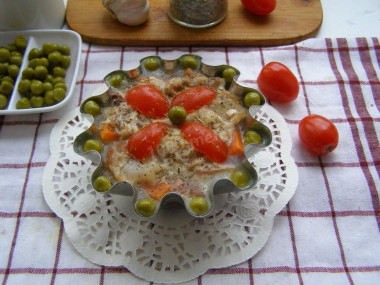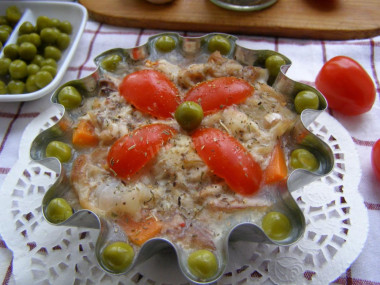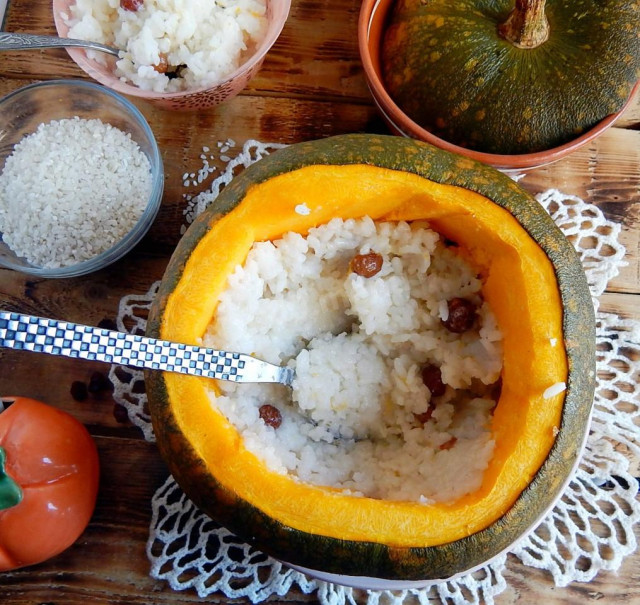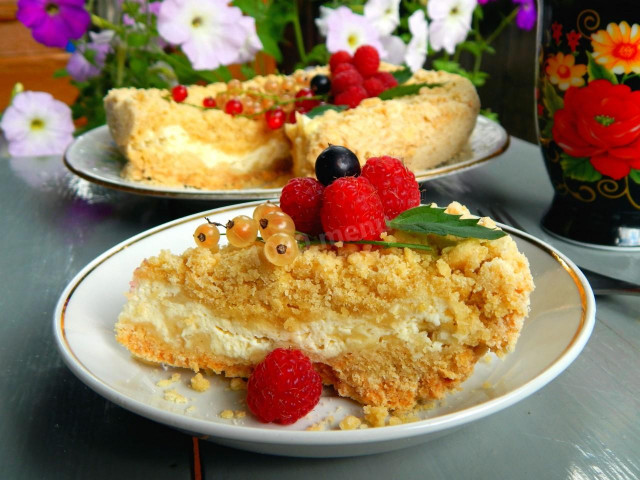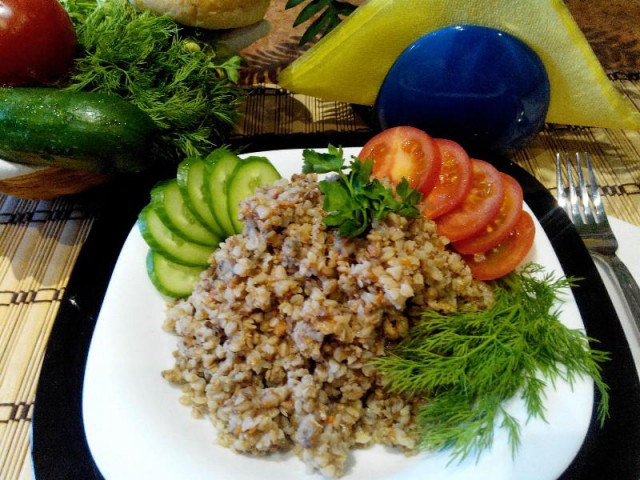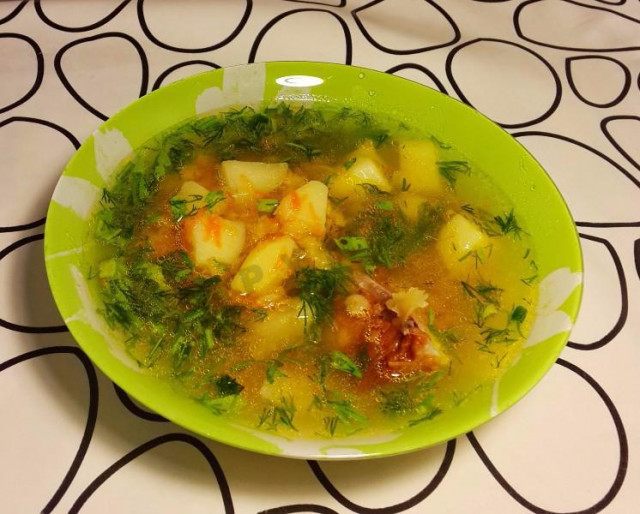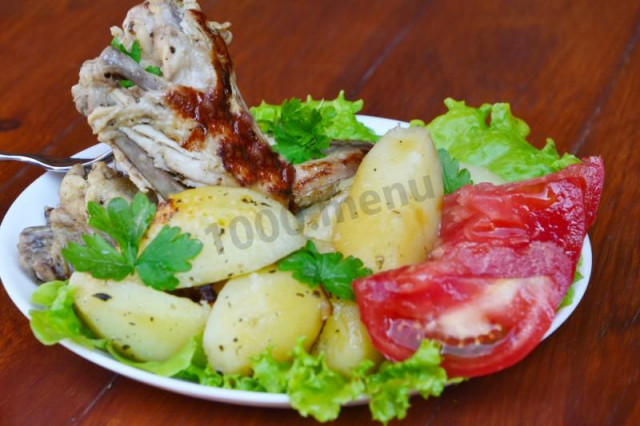Composition / ingredients
Step-by-step cooking
Step 1:
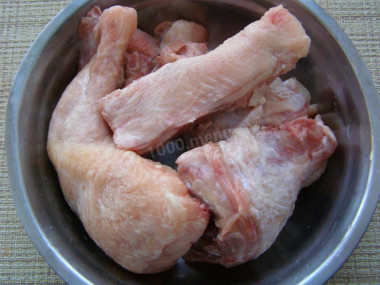
Cook the chicken carcass first. If you have it as a whole, it should be gutted, remove the head and cut the carcass into 4 parts, etc. Rinse the meat.
Step 2:
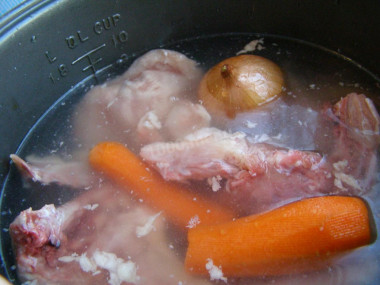
Then put the pieces of meat, onions (without removing the husks, but washing the onion under the tap) and peeled washed carrots into the bowl of the slow cooker. Pour water - so that it covers the contents. Close the lid and set the slow cooker to the "quenching" mode (if you do not have the "jelly" option in the slow cooker). We will set the timer for 5 hours.
Step 3:

After boiling the water, it is necessary to regularly remove the foam and after a couple of hours remove the onion and carrot. And after another 2 hours, add bay leaf and black pepper peas to the bowl of the multivarok.
Step 4:
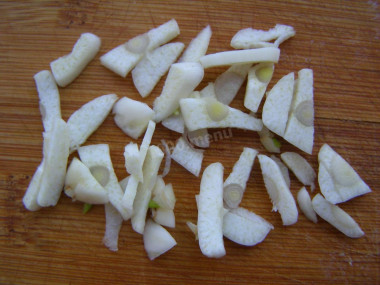
30 minutes before switching off, salt the jelly to taste and let it cool. In the meantime, chop the garlic. It can be put either in the broth, which has not completely cooled down yet, or directly into the dishes into which you will pour the jelly.
Step 5:
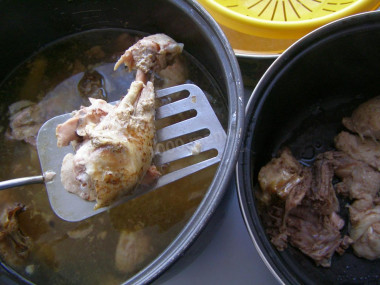
If everything is more or less cooled down, transfer the meat to another vessel.
Step 6:

If you did everything right, the meat will be removed from the bone by itself. It should either be disassembled into fibers, or cut into pieces – to your taste, and then start stacking the contents into molds. You can put only meat with garlic, or put the first layer of carrots and cucumber fresh.
Step 7:

Then you can lay out a layer of meat, then a cucumber, sliced thinly, and meat again.
Step 8:
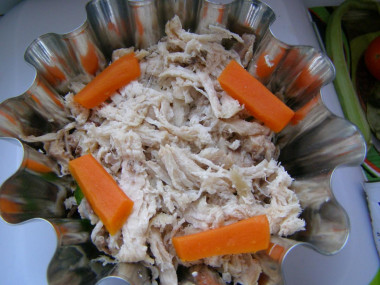
The next layer is carrot pieces, etc. In a word, as your imagination tells you.
Step 9:

As soon as you fill the mold with meat and other ingredients, fill it all with broth (so that half a centimeter or a centimeter does not reach the top) and start decorating, continuing this process after the jelly has solidified. Put the molds with jelly in the refrigerator or on the window.
And more tips
Meat. In addition to the carcass itself, it is necessary to take more additional parts, in which there are a lot of cartilage, tendons and small bones. And then you don't have to put gelatin.
Broth. It will have a golden hue if the onion is not peeled off, and more transparent if it is filtered after cooling. Fat, if desired, can be removed when it hardens.
Gelatin. If you understand that the broth will not harden, add gelatin to it, following the instructions.
Salt. Salt the jelly to taste shortly before switching off, then definitely do not over-salt.
Spices. Jelly "loves" bay leaf, pepper and garlic. The rest is to your taste.
Density. Do not put too much meat in the molds, otherwise the jelly may not freeze the way you would like.
Pouring. Jelly, which is properly cooked, is poured into both shallow and deep forms.
Solidification. As a rule, the jelly freezes by morning, so it's better to cope with cooking so that you have time to pour the jelly by night.
Decoration. Vegetables, greens, boiled eggs and the same carrot that you take out of the jelly without letting it digest can be used as a material for these purposes.
Submission. The jelly looks more beautiful and is more convenient if it is poured into small forms. If it is well frozen, it can be cut and served in chunks.
Caloric content of the products possible in the composition of the dish
- Category I chicken - 238 kcal/100g
- Chicken of the II category - 159 kcal/100g
- Chicken, flesh without skin - 241 kcal/100g
- Chickens - 140 kcal/100g
- Onion - 41 kcal/100g
- Fresh cucumbers - 15 kcal/100g
- Carrots - 33 kcal/100g
- Dried carrots - 275 kcal/100g
- Boiled carrots - 25 kcal/100g
- Garlic - 143 kcal/100g
- Bay leaf - 313 kcal/100g
- Black pepper peas - 255 kcal/100g
- Salt - 0 kcal/100g
- Water - 0 kcal/100g
- Cherry tomatoes - 15 kcal/100g

